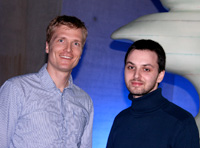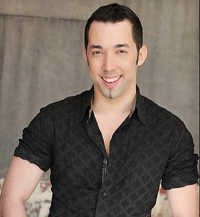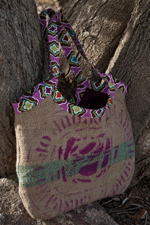 Hi and Welcome to www.entrepreneurship-interviews.com. Tell us a few words about yourself.
Hi and Welcome to www.entrepreneurship-interviews.com. Tell us a few words about yourself.
Mr. Kubens: Hello, my name is Michael; I’m 34 years old and live in Nuremberg, Germany. My business partner Eugen and I founded designenlassen.de (Designonclick) two and a half years ago. We’ve both been actively involved in online entrepreneurship for about ten years.
In 2008 you launched Designonclick in Europe. Tell us a few words about the marketplace.
Mr. Kubens: We started the site as a german-speaking marketplace for design. We currently have 8000 registered designers, and roughly 4000 projects have been completed via our website. We also offer Spanish, French and English versions of designenlassen.de.
I believe there are a few other marketplaces for designs. How is yours different, and does the location in Germany have a role?
Mr. Kubens: Good question! We are definitely smaller, more personal, and still have a strong focus on the German-speaking market. We are completely self-financed and have limited marketing resources. So, we need to use our resources carefully. We want to see our company grow through the recommendations of happy customers, and as a result, we have worked on improving our customer service and support. We always get in touch via chat with every customer who starts a project with us to offer our support and make sure everything is going smoothly. Certain projects also include telephone support, and we will call the client to make sure everything is going well.
How does the marketplace exactly work? How is the selling and buying process?
Mr. Kubens: The basic principle is pretty similar with every site similar to ours. Our clients define what they are looking for by creating a design briefing specifying what they are looking for and their conditions (project duration, budget, etc.) The designers submit their proposals, and then the client can provide feedback. At the end of the contest, the client chooses their favorite design. We offer a money-back guarantee if there’s no design that fits what the client is looking for.
What are the benefits for, say, a small company over a regular design company?
Mr. Kubens: Well, you receive several different design submissions from a lot of different designers. On average, over 100 design proposals are submitted per project. In our opinion, the diversity and selection offered by our site are some of the best aspects of designonclick.com. Another great advantage is that one can get a logo on a moderate budget – our logos start at just € 200.
How can the company make sure the designs are consistent with their already existing brand elements?
Mr. Kubens: Our clients have the option to use a corporate style guide as a guideline. Our customers are usually looking for creative, new ideas, though.
What’s the typical company purchasing designs from your site?
Mr. Kubens: Mostly start-ups, entrepreneurs, and small businesses use our site. Our site best fits this target group’s budget, and they are obviously open to trying alternative options for a good design.
Any advice for companies looking for a source for their designs?
Mr. Kubens: Yes, I would advise everyone using our site to make sure they have written their briefing as accurately as possible. Only then can a designer work as efficiently on a project as possible.
Are there any risks? How can one make sure the designs are unique?
Mr. Kubens: We don’t tolerate copyright infringement, and anybody caught violating this rule will be expelled from our site. Our designers create every design individually based on the specifics mentioned in the briefing, and every design is unique as a result. In most competitions, designers can see each others’ submissions and can report misuse of designs or any copyright issues.
Now, talking about the designers, how is designonclick different from other sites like elance.com or freelancer.com?
Mr. Kubens: Well, with designonclick, clients can start their design contest right away and don’t need to negotiate hourly rates or worry about finding the right freelancer. The designer who wins earns the prize money offered and has usually gained a repeat customer.
Is it more appealing to freelancers than to businesses?
Mr. Kubens: I think so. Our site can be used very flexibly. A lot of designers just work on projects when they have free time or no other design jobs.
How did you get the first designers and customers? I believe you created the platform, then what happened?
Mr. Kubens: Good question! I think most sites like ours have the chicken and the egg problem in the beginning. We started with projects so that our site would be more appealing to designers. After all, nobody can use our site if no projects are there! We mostly found our designers through word of mouth, and various design communities, as we didn’t have the budget for advertising in the beginning.
Most people wanting to become entrepreneurs are afraid their idea won’t work. How did you deal with this fear?
Mr. Kubens: We had and still have the same worries… and to be honest, a lot of our previous ideas didn’t work out. This is just a part of life if you’re an entrepreneur. My only advice is to try as many new things as possible, but try to keep the risks as low as minimal as possible. For example, only work on new ideas part-time and test them on a small-scale before investing a lot of time and money in it.
What was the happiest moment so far?
Mr. Kubens: There have been a lot of great moments…I remember the first morning after launching the site and how great it felt to see that there had already been designs submitted overnight. It was also pretty awesome when we were awarded two different entrepreneurial awards at CeBIT (technology trade show in Germany) in 2009. This was a huge push forward for us and also helped us pull through hard times.
You recently opened a US-based branch of your business. How difficult is it to approach a new foreign market?
Mr. Kubens: Very difficult! Competition from the English-speaking platforms is much stronger than here in Germany.
Any thoughts about the future?
Mr. Kubens: Our plan is to grow slowly but steadily and to grow as entrepreneurs as well!





